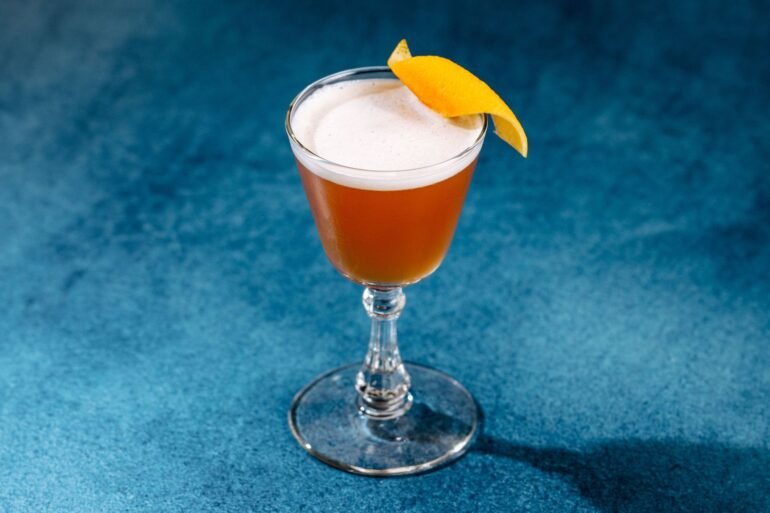:max_bytes(150000):strip_icc():format(jpeg)/scofflaw-FT-RECIPE1025-2bf6177147764d6a858da5b15a0044df.jpg)
The Scofflaw, a combination of rye whiskey, dry vermouth, lemon juice, grenadine, and orange bitters, debuted in Paris during Prohibition. The drink was the result of American bartenders who exported their craft across the Atlantic, where they were able to practice their trade legally.
In 1923, a Boston contest sponsored by temperance advocates invited the public to coin a new word to mock lawbreakers who continued drinking despite the 18th Amendment. The winning term, scofflaw, was meant to stigmatize, but bartenders quickly turned it into a rallying cry.
It’s up for debate which menu the drink first appeared on, but within a year, the Scofflaw turned an intended insult into a rebellion in a coupe glass, as the drink quickly became a symbol of American bartending ingenuity in exile. It is a cocktail rooted in defiance, but it endures because of its balance. It stands out as one of the best of Prohibition’s gifts to the cocktail canon.
Why the Scofflaw works
The Scofflaw has endured for a century because it takes the bones of a Whiskey Sour and reimagines them with Parisian flair. Rye whiskey provides the backbone, its peppery spice and dry grain character grounding the cocktail in its American identity.
Instead of a single sweetener, the Scofflaw relies on vermouth and grenadine. French vermouth offers dry, botanical sweetness, giving the drink length and elegance. Grenadine softens the edges, adding a subtle pomegranate fruit note that infuses the drink with both sweetness and tart depth.
Lemon juice balances the other ingredients with citric acidity, ensuring the drink never tips into cloying territory. Orange bitters and an orange twist contribute bright aromatics that add a fresh zip to the cocktail.
Compared to its cousin, the Whiskey Sour, the Scofflaw is leaner and more cosmopolitan in character. The result is a cocktail that feels at once bracing and refined — an act of Prohibition-era defiance.
Dylan Ettinger
2025-10-09 15:00:00

